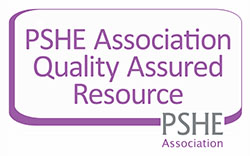Who is this lesson for?
This lesson is suitable for pupils in Key Stage 3.
What is included in the lesson?
The teaching resources include:
- KS3 Allergies Lesson Plan (doc) - 163 KB
- KS3 Allergies Presentation (ppt) - 12.6 MB
- KS3 A30 TABI (ppt) - 6.4 MB
- KS3 A31 Speech Bubble Symptoms (ppt) - 292 KB
- KS3 A32 Sentence Filler (doc) - 56 KB
- KS3 A33 Allergies Signs and Symptoms Filler (doc) - 52 KB
- KS3 A34 Word Search (doc) - 389 KB
- KS3 A35 Your Choice Optional Activities (ppt) - 589 KB
- KS3 Your Turn Severe Allergic Reaction (ppt) - 344 KB
- Teacher Guidance (doc) - 156 KB



















